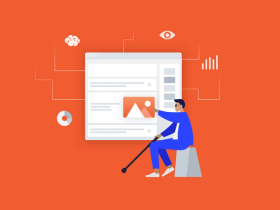How to Integrate your Healthcare App with Epic EHR
Published: May 2, 2022
7 min read
In this article, you'll learn:
1
💼 Electronic Health Record vs. Electronic Medical Record: Which One Is More Suitable for Your App?
2
🤖 Epic EHR Integration into your Health App
3
❓ What Tools can Complement the Epic EHR/EMR?
4
💡 Takeaways
Luckily, there are EHR integration options that solve such issues for medical professionals. You not only get access to a connected database of medical information but also a bunch of additional features that automate your workflows. With all possible benefits, certified EHRs are used by 72,3% of physicians in the USA, for example, and the numbers will definitely increase in the near future.
However, in the context of healthcare app development, the adoption numbers are lower in many regions, primarily because medical institutions are hesitant about integration due to possible difficulties.
In this article, we’ll talk about the difference between EHR and EMR integration. We’ll also cover the exact steps of integrating EHR systems on the example of Epic EHR integration, one of the most popular systems on the market. Apart from that, we’ll talk about an additional Tech Stack you can use to make up for the lack of features that Epic or any other EHR might have.
💼 Electronic Health Record vs. Electronic Medical Record: Which One Is More Suitable for Your App?
When integrating an EHR system, you might find yourself choosing between Electronic Health Records and Electronic Medical Records solutions.
Even though it might seem that Electronic Health Records and Electronic Medical Records the main difference lies in interoperability with other medical institutions and depth of information they manage.
Long story short, EMRs contain patients’ information from a certain clinic or physician only while EHRs integrate multiple vendors connected by the system and display medical history collected over months and years from each party of the system.
Deciding which one of the systems might suit your business needs better is actually pretty simple if you understand your business needs:
- EMR integration is easier to manage but doesn't provide a full picture of a client’s medical history. It’s definitely cheaper and also easier to implement into the workflow.
- EHR requires more patience and resources in terms of integration but offers a full overview of patients’ health and has more benefits when it comes to saving time and resources in the long term.
You can find contact details, exact steps to completing any of the integration ways, and other useful info on Epic’s Interoperability page.
❓ What Tools can Complement the Epic EHR/EMR?
After going through the list of features Epic offers and then talking to Epic’s representatives, you might find out that they don’t have all the features you need. So, to compensate for this shortage, you might want to integrate additional tools for a more complete healthcare management system.
An important aspect here is that you can actually combine the EHR system with other APIs in case you want to have a unified system for everything. Thus, if you’d want to get a more advanced booking functionality than your EHR system offers, you can simply find one and integrate it.
💡 Takeaways
To sum it all up, EHRs are all about helping to provide healthcare and improving the medical industry. A united database for medical information makes treatments more effective simply because healthcare professionals have a much wider view of patients’ health.
Summarizing the process of integration on Epic’s example, here are the steps you should take:
- Read through the Support Page.
- Create an account on the given platform.
- Make sure that the endpoints are properly working.
- Reach to the company’s representatives.
- Start the integration!
If you need any help with integrating an EHR system into your application or business flow, feel free to reach out to us. We’d be happy to help! 🚀
Was it helpful?
Read also

What is IoT Monitoring?

How to Make your React Native Application Accessible to ALL, not just to MANY

Case Studies: Success Stories of Businesses That Built and Launched SaaS Applications
Our clients say
![Stormotion client David Lesser, CEO from [object Object]](/static/93e047dadd367691c604d8ffd1f54b58/b0e74/david.png)
They were a delight to work with. And they delivered the product we wanted. Stormotion fostered an enjoyable work atmosphere and focused on delivering a bug-free solution.
David Lesser, CEO
Numina
